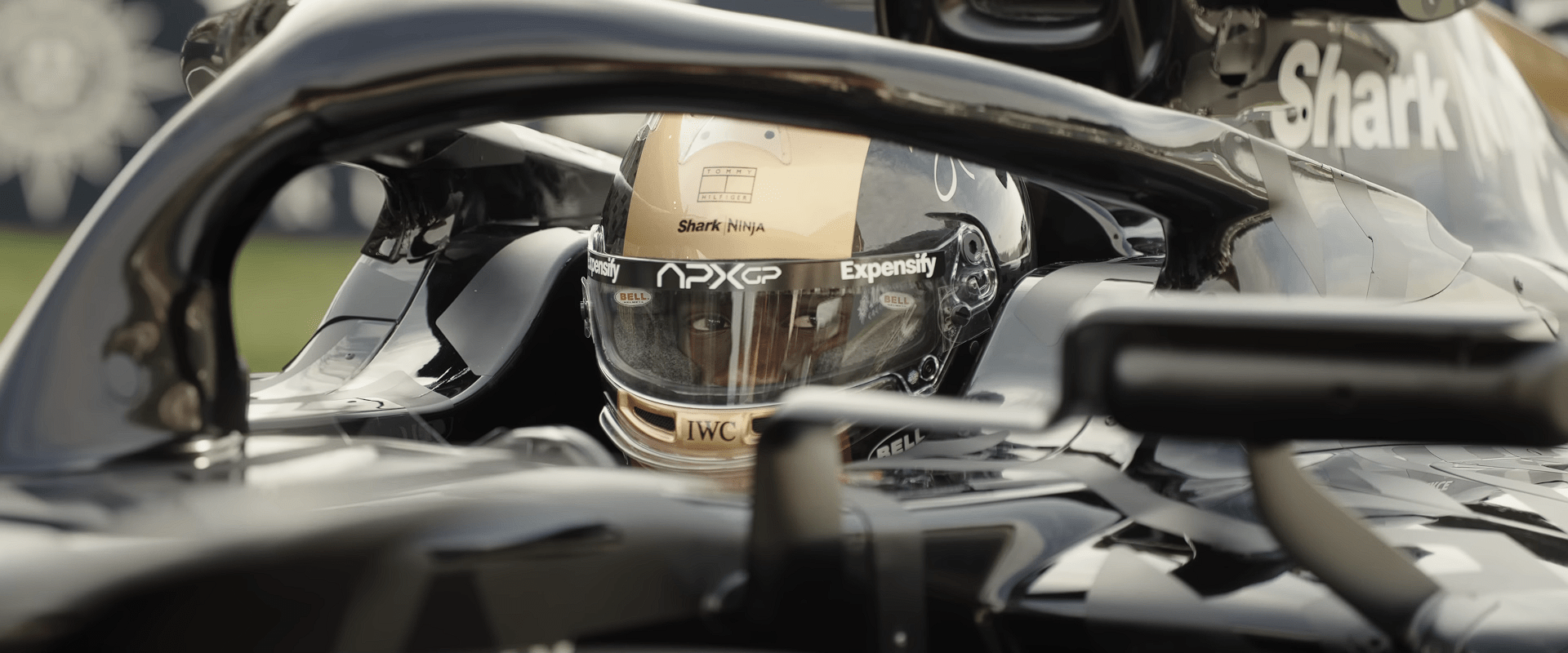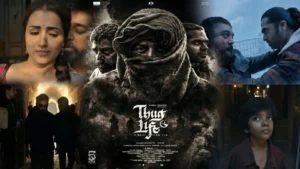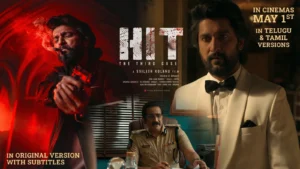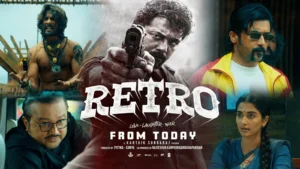Sometimes in life we watch certain films that fix everything inside us – mind, heart, soul, body, and even health (not medically speaking). I’m not exaggerating. Some films are so incredibly satisfying that by the time you walk out of the theatre, your metabolism improves, your mood resets, and your chakras align.
And by the smile on my face right now, you already know which category today’s film belongs to.
Because today, straight from the theatres of India, I have emerged after watching F1 The Movie, starring none other than Brad Pitt. And my brother, oh my god… what a time to be alive.
While watching this picture, I don’t know how many jerks I took on my seat – like this, and like that – purely out of excitement and that heart-pumping sensation you get when adrenaline and filmmaking collide at 300 km/h. But let’s slow down a little. I don’t want to overhype this film so much that your expectations jump into orbit and you go inside the theatre expecting enlightenment. That might be the only real danger for this film.
Yet what can I do? I’m just a human who watched a damn good movie.

The Setup – A Film That Had Three Major Challenges to Cross
After watching the teaser trailer, the excitement was real. Those quick cuts, those roaring engines, that ear-shredding sound design – it all felt like the filmmakers were promising something solid.
But for this film to truly work, it had three massive challenges ahead of it.
- The Setup – A Film That Had Three Major Challenges to Cross
- Challenge #1 – Explaining F1 Racing Without Turning It Into a Classroom
- Challenge #2 – Making Us FEEL the Speed
- Challenge #3 – The Underdog Story We’ve Seen 10,000 Times Already
- The Dialogue Game – Snappy, Sharp, No Time to Breathe
- The Music – Hans Zimmer’s Evil Intentions
- The Director – Joseph Kosinski Delivers ANOTHER Killer
- Personal Regret – Not Watching in IMAX (Yet)
- Small Realism Issues – And Why They Don’t Matter
- A Theatre Experience You Should NOT Miss
- Related Movie Reviews
- Rate this movie
Challenge #1 – Explaining F1 Racing Without Turning It Into a Classroom
F1 is a sport many Indians casually know but don’t actively follow. Everyone understands the basic rule – finish first. But the finer details? The strategies? The technicalities? The advantages hidden inside tiny rule twists?
This is where movies usually mess up. Either they start spoon-feeding you like a kindergarten teacher – “Look child, this rule means this… this means that…” – or they get too clever and make everything so vague that you sit inside the theatre confused like:
“What is happening? Why is that car allowed to do that? Why is that driver angry? somebody explain!”
Now let me be honest – I have never followed F1 racing in my life. Not even highlights. Not even YouTube shorts. So technically, I am the exact target audience this film wants to win over.
And bro – they nailed it.
The way the film blends commentary, car mechanics, race strategy, and the technical crew’s communication – it all flows naturally with the scenes. They never pause the film to explain things. They let the story teach you organically.
Just like cricket has power play, DRS, impact player, and strategy time-outs, F1 too has its clever rule-bending advantages. And instead of explaining these rules with diagrams, they show the advantage first, and then you understand the rule automatically.
Brad Pitt’s character uses a smart trick during one of the races. When you realize what he’s doing, the entire theatre bursts into reactions:

“OH! This guy is clever!”
That’s when you know the film hit the sweet spot – educating without preaching, guiding without overtalking.
Challenge #2 – Making Us FEEL the Speed
Cars going at 80 km/h look fast in real life.
Cars going at 150 km/h look terrifying.
Cars going at 300 km/h inside a theatre?
Brother… you don’t even breathe properly.
Capturing that speed – not just visually, but physically – was one of the biggest challenges. And the team went crazy on this.
The shots, the framing, the editing style, and most importantly the sound signature – they’re all built to create an immersive sensation. This movie doesn’t just show speed; it transfers speed into your brain.
This belongs to that rare category of films that you must watch only in a theatre. If you try watching it on your phone, your phone will be insulted. Your earphones will be disrespected. Your senses will protest.
I’m telling you – I wasn’t joking when I said I took jerks on my seat. At one point, my hand literally shook out of excitement. That is the level of thrill F1 The Movie generates.

Challenge #3 – The Underdog Story We’ve Seen 10,000 Times Already
The third challenge is perhaps the biggest one.
How many times have we seen the same template?
Old racer. Past his prime. People think he’s done. He joins the team. He struggles. He rises. He proves everyone wrong. Boom.
We’ve practically memorized this arc. Not to mention, Ford v Ferrari already delivered one of the best racing dramas ever.
So how does F1 avoid feeling like a duplicate?
By adding a second driver.
You must have seen in the posters – Brad Pitt isn’t the only lead. There’s a younger driver who shares equal focus. Their rivalry, their chemistry, their tension, their ego clashes, and their unexpected teamwork create a fresh dynamic.
And then there’s Javier Bardem whose presence automatically elevates anything he’s in. Their individual personal stories connect beautifully – the film never isolates anything. Every character has weight.
The underdog story feels familiar but not repetitive. Formulaic but emotional. Predictable but delicious.
The Dialogue Game – Snappy, Sharp, No Time to Breathe
I watched the English version, and the dialogues run like rapid fire.

One-two, one-two, one-two.
The film doesn’t sit quietly even for a second. The energy is relentless. Conversations move fast, decisions move fast, and everything builds into this high-octane environment where the characters don’t waste a single breath.
This is the kind of writing that pulls you in without needing melodrama or emotional manipulation. It’s straightforward, sharp, and confident.
The Music – Hans Zimmer’s Evil Intentions
Let me give you another reason to watch this picture. The music. Composed by Hans Zimmer. Now I don’t know what kind of protein shake he drank before composing this soundtrack, but the intensity hits your spine directly.
During races, the background score doesn’t accompany the film – it drags you into it. When engines roar, Zimmer roars louder. When cars accelerate, the score becomes a weapon.
If you plan to drive a vehicle after watching this movie, I request – take a five-minute break. Don’t let Zimmer’s adrenaline push you into thinking:
“Let me also hit 0–100 like Brad Pitt.”

Because you cannot. Your WagonR is not an F1 car.
The Director – Joseph Kosinski Delivers ANOTHER Killer
If you’ve watched Top Gun: Maverick, the director is the same – Joseph Kosinski.
That explains everything.
He knows how to shoot speed, how to capture velocity, how to blend emotion with machinery, and how to make the audience feel like they’re inside the cockpit.
The first half keeps building and building and building until it reaches a point where the whole theatre gasps together:
“Oh god, what just happened?!”
And then I had a minor panic attack – “Is the interval gonna cut here? Please no. Please no. Don’t ruin the adrenaline.”
But then… miracle.
For the first time in my life, a Hollywood movie in India actually respected its designated interval point. I saw the screen fade to black at the perfect intended moment. My soul left my body.

Personal Regret – Not Watching in IMAX (Yet)
My biggest sadness today?
I didn’t watch it in IMAX.
There was some travel issue, what can I say? But I’m going again. This time in full IMAX glory.
If you want another review, another breakdown – I’ll do it. Because this is the kind of movie that deserves multiple rounds.
Small Realism Issues – And Why They Don’t Matter
Look, hardcore F1 fans may complain:
“That rule is a bit off. That’s not possible. That’s exaggerated.”
And yes, sometimes the film stretches realism to make Brad Pitt look like an F1 genius. Sometimes a Lockheed Martin engineer magically fixes a “piece of junk” car just because the hero says something motivational.
But bro… it’s a film.
A little stretching is allowed. They do it only to create moments. And those moments land beautifully.
So who cares?

A Theatre Experience You Should NOT Miss
I don’t know about the Hindi dub. But if you want to watch a good movie, a theatrical movie, an adrenaline movie, a pulse-racing movie – You should not miss F1 The Movie in theatres. If you skip it, you will regret it later: “why didn’t I watch this in theatre?” Because this is a cinematic experience. A technical achievement. A thrill ride. A masterclass in sound design and adrenaline storytelling.
F1 The Movie is not just a film – it’s a rush.
A perfect, electrifying, seat-shaking, jaw-dropping theatrical experience.
My rating: Perfection, bro. Absolute perfection.











